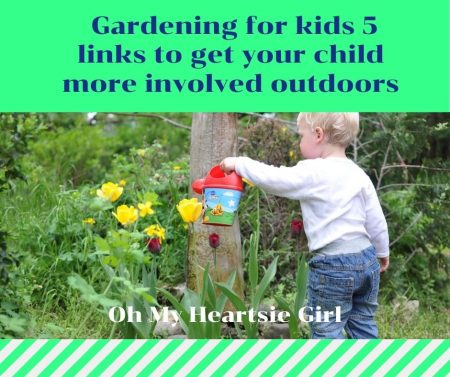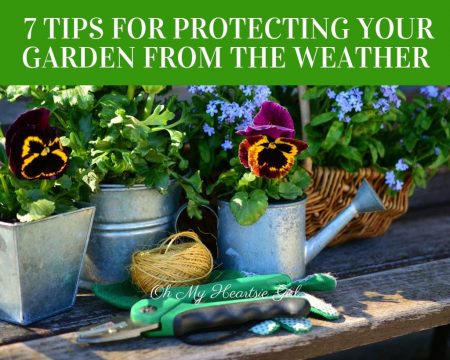 It would be fair to say that we are firmly in an era that is dominated by PlayStation’s, the internet and everything else that involves tech.
It would be fair to say that we are firmly in an era that is dominated by PlayStation’s, the internet and everything else that involves tech.
It means that gardening is often forgotten about. This is despite the fact that it has countless benefits associated with it, including:
- First and foremost, it’s fun
- It gives children responsibility
- It provides them with information on nutrition (key in today’s world)
- Allows them to develop cooperation skills
- The list could go on!
Bearing this in mind, today’s article is a collection of links that we have stumbled across through the internet over the last few months. Hopefully, by the end of proceedings, you’ll have a much better understanding of how to get your child more involved in gardening, whilst keeping it fun at the same time.
House Beautiful – How to make gardening fun
For those of you who perhaps don’t quite know where to start with your child’s new hobby, let’s direct you to House Beautiful. They have collected just five points which provide an excellent starting base and show what you need to do to get your garden adventure started for your little ones.
Avas Flowers – Go bright and colorful
As we all know, kids love bright colors. This is where the Avas Flowers Pinterest page comes into the picture, so kids can see photos of colorful plants and flowers. Your little ones really will be enticed outside if your garden is decorated with such plants, so take a look at the Avas Flowers website to read more about what you should be turning to.
Life Hacker – The easiest vegetables to grow for beginner gardeners
Little else needs to be said about this next suggestion. Put simply, the article tells you some of the easiest vegetables to grow for beginners. Children obviously fall into this category and if they can see that the garden is producing something tangible (which they can taste!) it can make all of the difference.
Express – How to create a children-friendly garden
This next article comes courtesy of the Express, although it has been written with Alan Titchmarsh (a leading gardener in the UK, for those not aware).
It goes into all sorts of ways to make your garden child-friendly, which should be your main focus as you integrate this new hobby in your family life. It doesn’t just touch upon the obvious but also talks about some of the lesser-known safety factors such as avoiding poisonous plans etc.
BBC – How to set up a wormery
Granted, most parents are going to wince at this final suggestion. Unfortunately, like it or not, kids love worms. A wormery provides them the perfect reason to get out to the outdoors and get up close and personal with these fascinating bugs.
Over the weeks they’ll see all the little tunnels these creatures create and it really will provide the perfect excuse to get out more.
Resources:
[…]
Vegetable Gardening Tips for Beginners
Tips for Teaching Young Children Street Safety
 Gardening is an amazing hobby that helps you feel closer to nature while at the same time cultivating new life. A garden can also be a great way to add some beauty to your backyard and attract lovely wildlife like birds and butterflies.
Gardening is an amazing hobby that helps you feel closer to nature while at the same time cultivating new life. A garden can also be a great way to add some beauty to your backyard and attract lovely wildlife like birds and butterflies.
 For those of us lucky enough to live in a continent with all four seasons, getting outdoors in all weathers is of top concern. One of the best ways to make the most of your own backyard is through gardening. Setting up a garden for your family, or yourself means getting to know your outdoor environment and familiarizing yourself with DIY tools and tricks. With a wide variety of weather to worry about, new plants are at risk of being flooded out, while certain fruits and vegetables could dry out in hot summers if they don’t get enough shade.
For those of us lucky enough to live in a continent with all four seasons, getting outdoors in all weathers is of top concern. One of the best ways to make the most of your own backyard is through gardening. Setting up a garden for your family, or yourself means getting to know your outdoor environment and familiarizing yourself with DIY tools and tricks. With a wide variety of weather to worry about, new plants are at risk of being flooded out, while certain fruits and vegetables could dry out in hot summers if they don’t get enough shade.

 Gardening has always been one of the most productive hobbies one could ever have. Tending through all of these tender beings every day until it is time to harvest can be quite the chore. Most plants take a long time before they are even ready for harvesting. Trees, especially fruit-bearing ones, can sometimes take years before you can even see your yield. Some vegetables grow back after a harsh winter while others die off and you have to plant them again. It can be boring and repetitive, but this is how you develop patience and will continue this journey.
Gardening has always been one of the most productive hobbies one could ever have. Tending through all of these tender beings every day until it is time to harvest can be quite the chore. Most plants take a long time before they are even ready for harvesting. Trees, especially fruit-bearing ones, can sometimes take years before you can even see your yield. Some vegetables grow back after a harsh winter while others die off and you have to plant them again. It can be boring and repetitive, but this is how you develop patience and will continue this journey.
